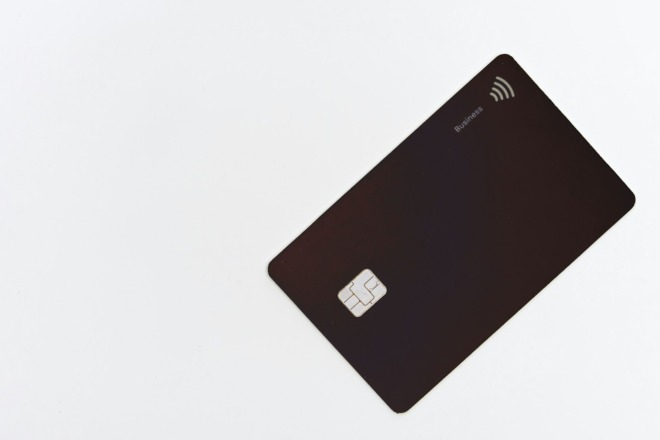When you’ve put the finishing touches on a design project and feel you’ve done your best work, there’s only one question left to answer: Which file format should you use when saving it?
Some designers commonly use the default settings of respective programs when saving files. However, that’s not always the best choice. Certain file types can be detrimental to particular images. Keep reading to get a detailed guide about file types and best usage practices.
Terminology to Keep in Mind

Courtesy of Giphy
Before looking at specific file types, check out this refresher of need-to-know terms that are sometimes related to saved images:
Lossless file format:
As the name suggests, these formats preserve all the components of the original image. Although these files may be large, it’s still possible to compress them.
Lossy file format:
These types give approximations of what your image looks like, which means saving the files may lead to fewer colors. Lossy files are typically smaller than their counterparts, but may be lower quality.
Vector images:
These are resolution-independent graphics composed of dots, lines and other shapes that are individualized equations. When enlarging a vector image, all parts get bigger without blurriness or pixilation. Vector images always render identically regardless of size, so the terms lossy and lossless do not apply.
Raster images:
Comprised of dots, or pixels within a grid where each dot has one color, raster images are common, and photographs are some of the most widely seen raster images on the web. Changing the size of a raster image could cause declines in quality and sharpness.

Courtesy of Giphy
Now that we’ve restored those terms to the front of your mind, it’s time to take a closer look at some of the most popular file types and when to use them. Complementing examples will help solidify the relevant principles and make it easier to put this information to practical use within design work.
JPEG or JPG Images
Officially called Joint Photographic Experts Group after the team who developed them, these pictures are some of the most familiar types you’ll see online. They are lossy, raster-based images that work well if you need to compress a file to send it via e-mail.
Photographs and gradients are typically best saved as JPEGs. It’s also appropriate to save a banner ad, like the one below, as a JPEG. This file format is ideal for high-quality or very detailed images. However, it is not preferable if your file includes some forms of digital art, like logos or icons.
PNGs
The PNG, or Portable Network Graphic file type, is another very well-known option you’ll encounter during design projects. Unlike JPEGs, PNGs support transparency, which makes them more flexible for certain needs. Also, PNGs offer 24-bit color. Speaking of colors, if you are working with an image that has from one to three colors, it’s probably best to save it as a PNG.
However, PNGs are one of the largest file types. That means you’ll definitely need to compress them when sending via e-mail or adding to a collection of CMS files.
Because this JCPenney graphic only has two shades of blue within the background and a white font, it’s a worthy candidate for saving as a PNG.
GIFs
Use GIF, or Graphic Interchange Format, files when working with flat graphics,. Especially do this if they include animations or clearly defined areas of graphics and text in a restricted area. GIFs use a lossless format during compression, and when compressed, they take up less space than PNGs.
This image of a dress and layered accessories originally appeared on ModCloth.com, a trendy apparel retailer. Originally appearing as part of an e-mail campaign, the animated graphic of the dress cleverly changed to give viewers ideas about how to layer different items and look stunning. The captured screenshot showcases a three-layered outfit, but the animated image included two wardrobe snapshots that demonstrated how to wear one and two layers of clothing for the resulting outfit.
TIFF
TIFF, or Tagged Image File Format, files came about when people realized an unmet need to scan physical documents and view them easily on computers. If a client has ever sent you a digital copy of a scanned magazine page to give an idea of a visualized concept, it probably arrived in your inbox as a TIFF.
TIFF files are compatible on almost all computers. If you are unsure which operating system a recipient has, a TIFF file is a safe bet. It also retains all formatting. So when you’re in the middle of updating your design portfolio before applying for an in-demand job opening, it’s a good idea to save any scanned versions of your print-based work as TIFFs.
There are several compression options you can use with TIFFs. Even better, they still look pleasing, even at high-compression rates.
The creative Honda ad below got attention as an outstanding print ad. It makes people look twice, because what first appears as a maze is an arrangement of heavy-duty trucks. If you were involved in a visually alluring print ad like this one and want to distribute it digitally, the TIFF format would aid in retaining the original impact.
Developed by the Adobe Systems team, the PDF is also known as Portable Document Format. One of its most notable advantages is that a person can open a PDF file on any operating system. They can then see the content represented in the same format it was created. Additionally, many computers, smartphones and tablets have PDF readers and viewers pre-installed.
Because of these advantages, the PDF is a good file format when the material will potentially be viewed on many platforms and shared among individuals with different setups. However, when collaborating with other designers on an unfinished file, realize that editing PDFs normally means having to use dedicated, expensive software that may not be readily available for some people.
Also, editing the text on a PDF document is not straightforward because the technology treats letters as images. That’s yet another reason you may not want to save an unfinished design project as a PDF.
That said, maybe you have just created a list of retail prices, model numbers or other material you don’t want to risk getting purposefully or unintentionally altered by people who view it after you distribute the file. In that case, pick PDF as the desired format.
PDFs don’t take up a lot of space on hard drives. This is advantageous when sending to people who may view the file on company computers that are used for many purposes.

Courtesy of Giphy
Thanks to what you just read, there’s no need to fret when figuring out the best way to save files. Making a smart choice could lead to better results.



Email do not allow to send large files. But you can use specialized programs like Binfer to bypass this limitation. With Binfer you can send large files of any size. You can drag and drop entire folders with hundreds to pictures. Keep publishing such interesting articles.
Thanks for the useful information. I like the service for creating the logo design of the https://turbologo.com. There you can create a logo for free.
Thank you for the advice, I have more than once encountered such inconsistencies when, when preparing a presentation, it is not possible to enlarge or reduce the image so that the quality remains attractive. Therefore, I use a professional resource where there is a large selection of photos for various industries, starry night images https://depositphotos.com/stock-photos/starry-night.html The resource also has a blog where I get useful information in the field of photography, design and marketing.